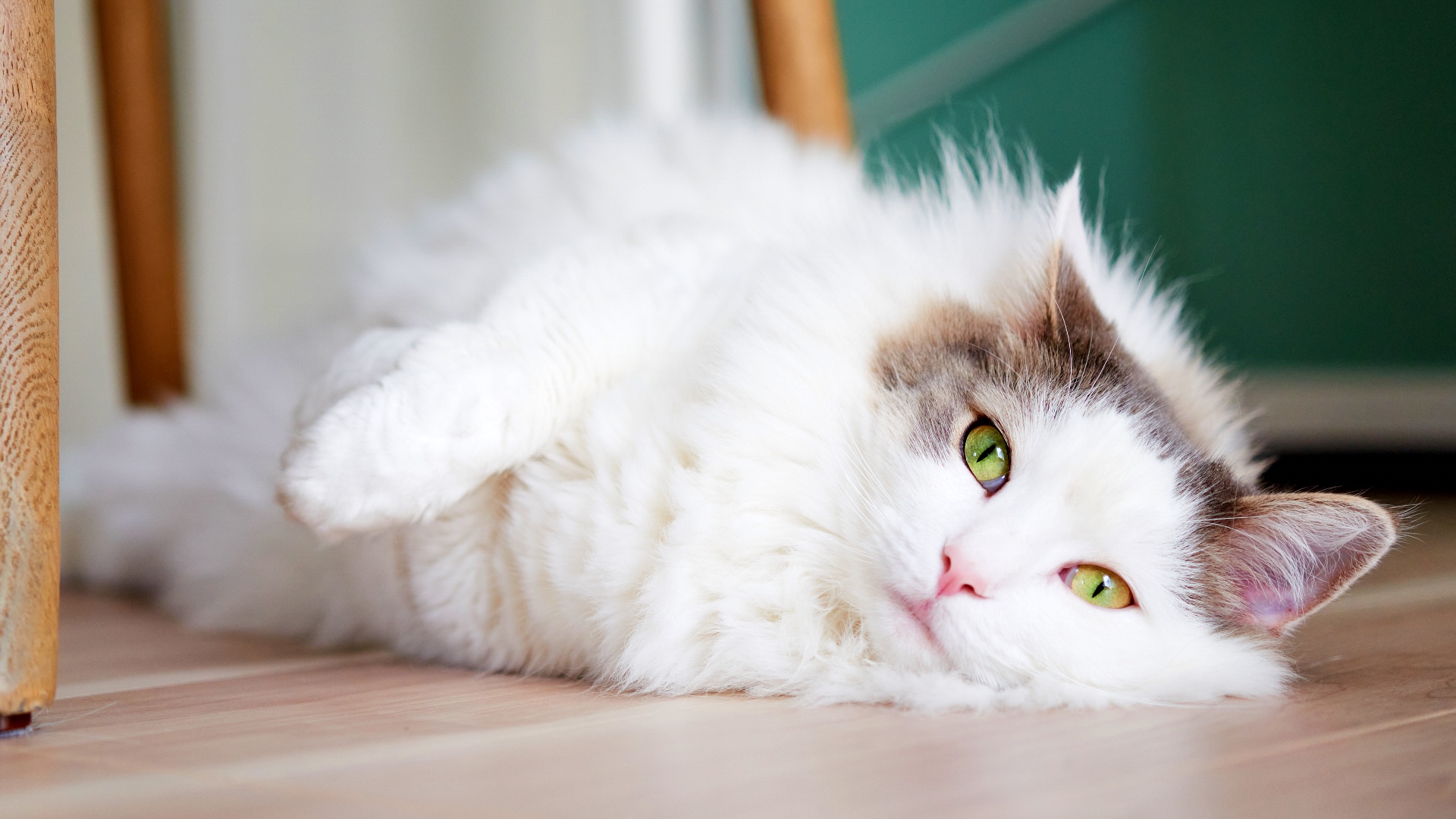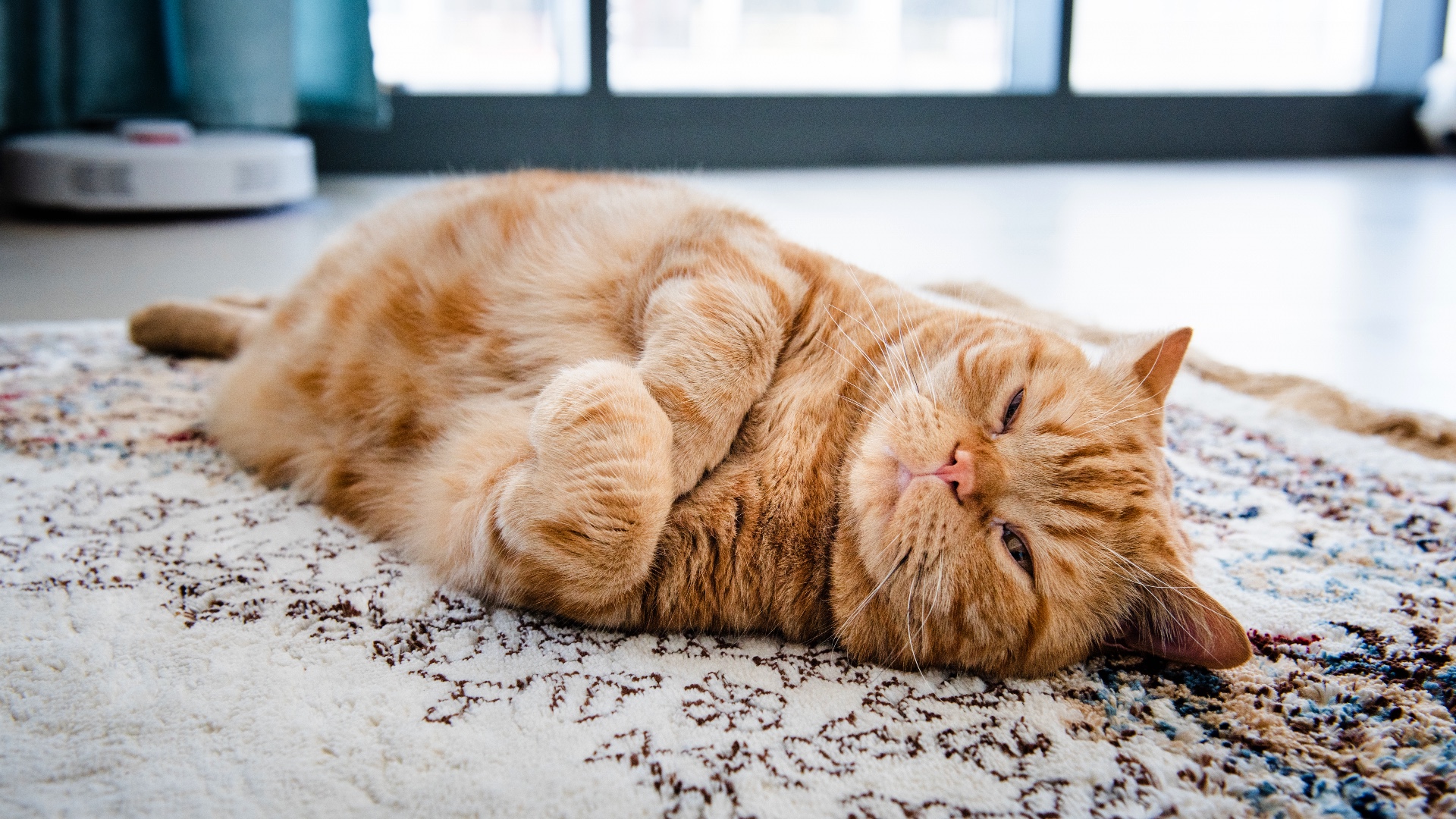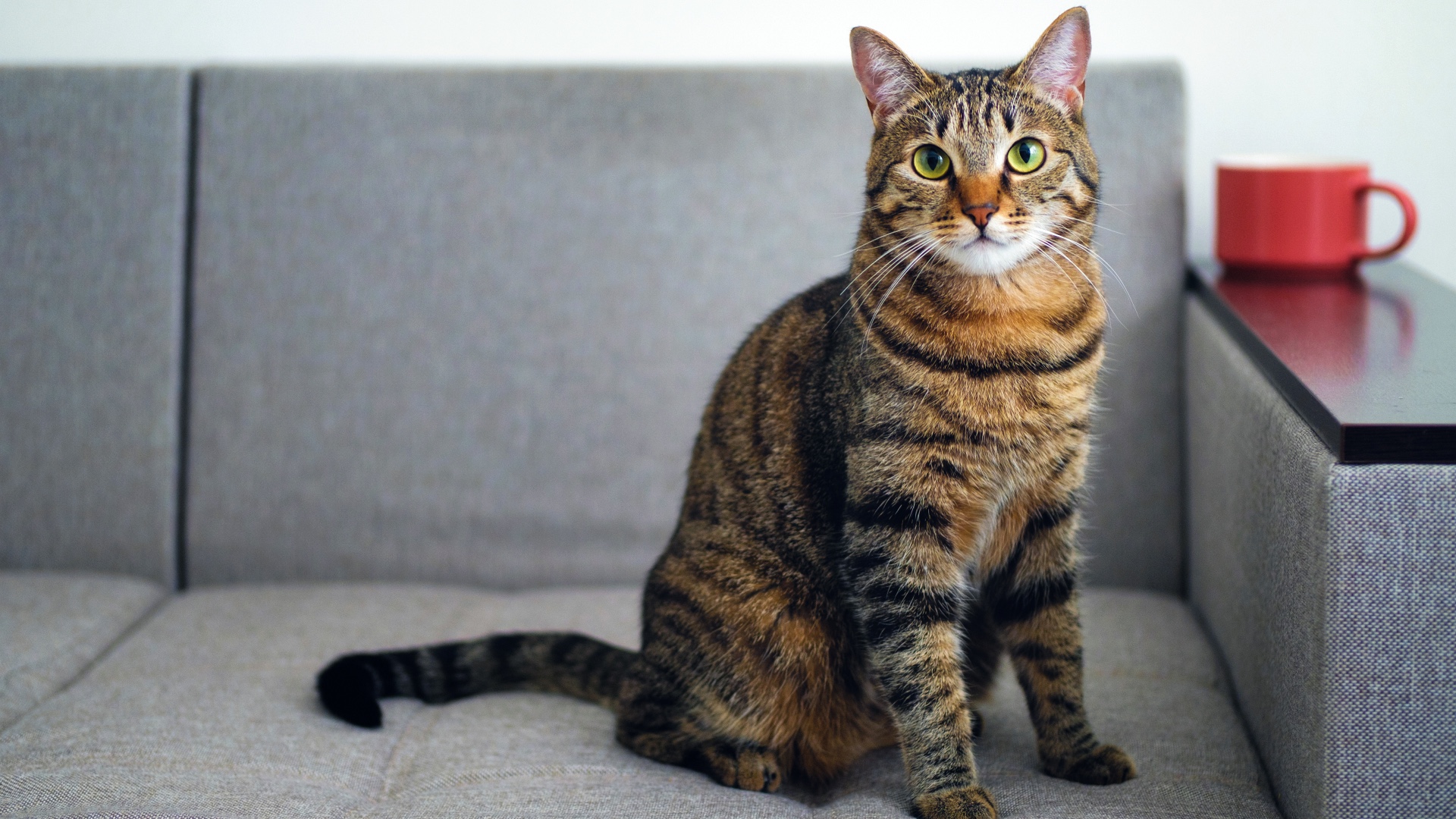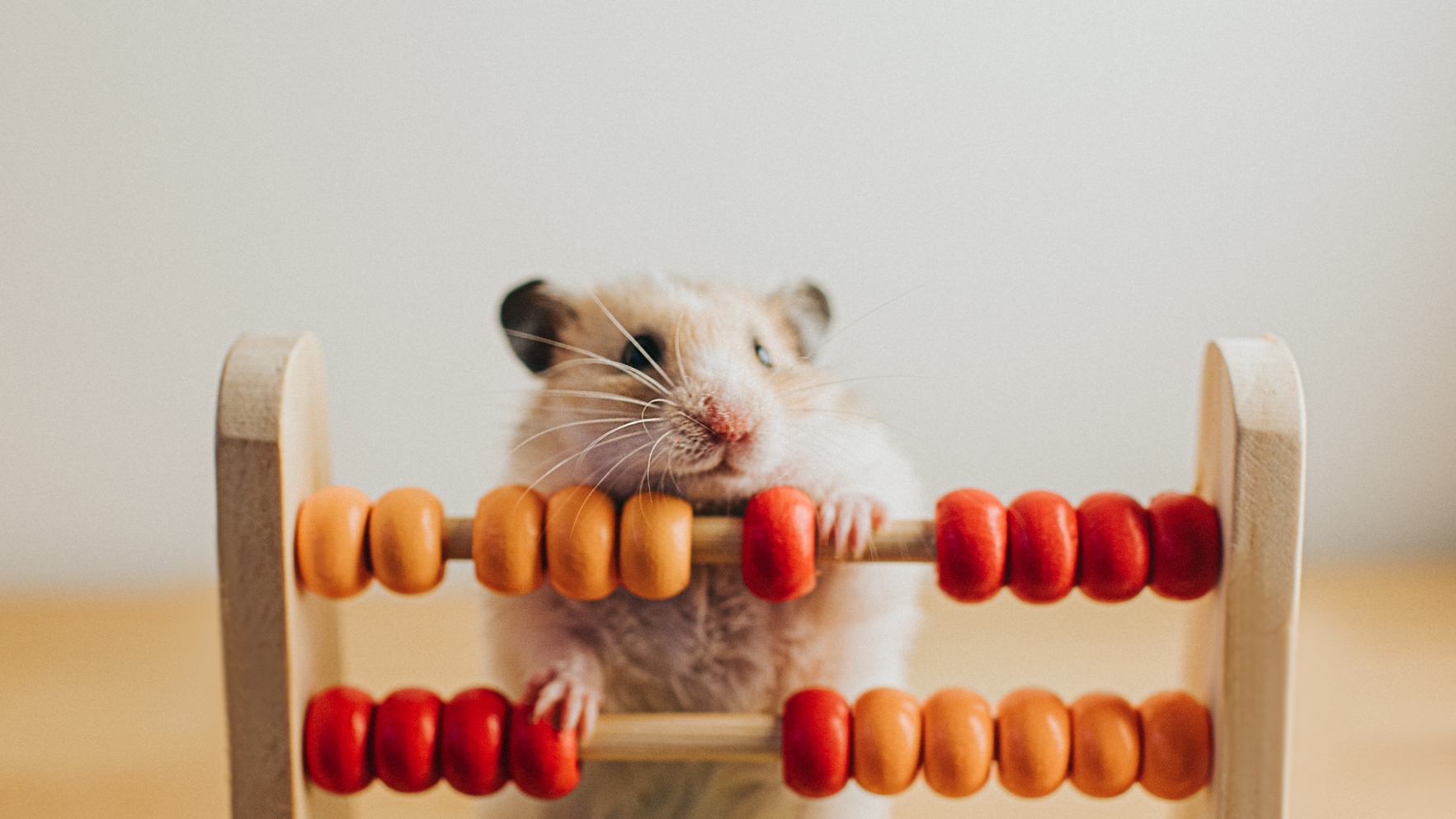How to reduce cat shedding and what causes it
Our vet Dr. Woodnutt answers ‘why is my cat shedding so much?’ and gives you tips to help

Cat hair may be the bane of many owners, but if cat shedding is getting out of control in your house we have a feeling you may be — excuse the pun — pulling your hair out! Shed hair seems to stick to everything, whether it’s the sofa, your favorite blanket, or the smart outfit you’ve been saving for that important meeting. In this article, we’ll cover what causes cat shedding, why cats may shed more than normal, and how to reduce cat shedding to a more manageable level.
Why do cats shed?
Most cats shed their fur twice a year, usually in spring and autumn. During this time, they’ll lose most of the hairs on their body, and they’ll all be replaced by a fresh set. They’ll grow in a thicker coat as autumn hits, and then a thinner one as the days get longer in spring. Whilst you might think that this change in coat is caused by the cold temperature, it’s actually the changes in day length (and the amount of melatonin they produce in response to light) that spur your cat on to shed their fur and grow a new coat.
Alongside this, your cat’s coat is constantly being renewed even between these shedding times. This happens on a much smaller scale, with each hair reaching the end of its life, falling out, and being replaced by a fresh one.
How much shedding is normal for a cat?
Whether your cat’s shedding is normal depends on several factors, so it’s easier to pick out the cat shedding that is definitely abnormal. To identify whether your cat’s shedding is normal, you should first observe your cat. Are they grooming more than normal? Scratching at all? Eating and drinking normally? Skin problems are a common cause of hair loss so look out for tell-tale signs that your cat’s skin is causing a problem.
Next, you may need to check your cat over. Try to assess whether their hair is thin at all. When a cat sheds their coat, they shouldn’t be left with bald patches. A rash or scabs under the fur or coarse, broken hairs are another sign that something is amiss. Other than loose hairs, is the fur in good condition, or does it have dandruff or feel greasy?
Why is my cat shedding so much?

If you still think your cat is shedding more than normal, let’s look at some reasons why your cat might be shedding so much.
Season
Whilst it’s normal for cats to shed more fur at certain times of the year, it can still take pet parents by surprise. You might notice that outdoor cats undergo a more dramatic seasonal shed than their indoor counterparts, but all cats will shed to some extent in the spring and autumn.
Get the best advice, tips and top tech for your beloved Pets
Breed
If you’re used to certain breeds, you might be surprised that your new cat is shedding so much. But it’s normal for some breeds, especially long-haired and thick-coated breeds, to shed more. If you think about it, this makes sense – cats with more hairs per inch have more hairs to shed!
Parasites (fleas, lice, mites, and ringworm)
Anything that irritates the skin can cause increased shedding. And the most common and irritating things are parasites. Fleas, lice, and mites can all cause irritation leading to increased grooming and shedding. Ringworm is a fungal disease that infects the hairs, causing increased shedding and sometimes patches of hair loss. It can be hard to spot in cats, but is very infectious and can spread to humans, dogs, and other animals your cat comes into contact with, so it’s best to get on top of this one as soon as possible.
Allergies
Feline allergies can cause skin problems that cause increased shedding. Whilst flea bite allergy makes up a majority of feline allergies, cats can also be allergic to weeds, pollens, and even their food. Don’t go switching their food willy-nilly though – getting to the bottom of cat allergies should be done with a veterinarian, or ideally a veterinary dermatologist, as they can be difficult to deal with.
Poor diet
As long as your cat is on a complete and balanced diet suitable for their age, it’s unlikely that diet is the cause of excess shedding. However, if your cat has been very picky and is leaving part of their food, or if they’ve been recently rescued, it may be that their diet hasn’t been good enough to enable them to make healthy fur.
Arthritis
Arthritis doesn’t cause your cat to shed more, but it can look that way. Cats are usually fastidious groomers and many of their shedding hairs will be swallowed and pass in the feces or as a hairball. Cats with joint disease may struggle to groom properly, meaning fewer hairs are groomed away and more end up on your carpet and furniture.
Disease
Many diseases take a lot of energy from the body, and this energy will usually be diverted from non-essential functions. Since your cat’s coat is considered non-essential to survival, it’s one of the first things to go if a cat is dealing with other problems. Kidney disease, feline flu, hyperthyroidism, and cancer are just some of the diseases that could cause a cat to shed more than normal.
Obesity
Like arthritis, obesity prevents a cat from grooming properly. Whilst this doesn’t actually increase shedding, it can increase the appearance of shedding because they’ll be swallowing less fur and leaving more around the house. Obesity is increasingly common and very harmful, so if there’s any chance at all that your cat is a bit ‘cuddlier’ this year, it’s best to check in with a vet and start a diet to get them back to a safe weight.
Stress
Ever noticed how much your cat sheds at the vets? Stress – both long-term and acute – can cause cats to shed more than usual. Cats stress at the smallest changes in their environment, from movement of the furniture to changes in their routine. Have a think about whether stress could be the cause of your cat’s excess shedding.
How to reduce a cat’s shedding

Even if your cat is shedding a normal amount, it’s understandable that you want to reduce your cat’s shedding and get it under control. Whilst there’s no ‘magic bullet’ for cat shedding, there are some things you can do that can reduce the amount of hair your cat leaves around the house.
- Groom your cat — regular grooming with the right type of cat brush can help to remove those dead hairs before they’re fully shed. This won’t reduce the shedding, but it will prevent the hairs from falling all over the house. Our guide to brushing cats should help you get your cat on board with his new grooming routine.
- Check your anti-parasite regime — Fleas, lice, and mites are all killed by anti-parasiticides you may already be using. However, it’s worth checking that your cat has been getting the correct dose and is up to date. If you’ve not been using a prescription product, it might be worth checking with the vet whether there’s a more effective product available.
- Get them checked at the vet — If you’ve noticed a change in the amount your cat is shedding, it’s time to book a vet visit. Skin disease, allergies, arthritis, and many other diseases can all cause cats to shed more than usual. Your vet should be able to examine your cat and rule out many of these causes, but they might suggest a blood test to help rule out some hidden diseases.
- Increase essential fatty acids in the diet — you may have spotted by now that skin health and shedding go hand in hand. One of the best ways to improve your cat’s skin and fur health is to increase certain nutrients in their diet. Essential fatty acids (EFAs) can be found in ‘skin care’ diets and skin supplements, and most cats tolerate taking them very well! They don’t normally require a veterinary prescription, so can be a good option for a home remedy for excessive shedding.
How to get rid of cat hair in the home

There’s no NHS for pets. Veterinary care can be eye-wateringly expensive and most pets will need treatment for an illness or injury at some point in their life. It’s difficult to think about your animals being hurt or unwell, but you need to ask yourself: what would you do if you were faced with a vet bill for hundreds or thousands of pounds?
Over time, reducing cat shedding as above will reduce the amount of cat hair in the home, but it can take a while to see a difference. In the meantime, you’ll want to know how best to get rid of cat hair around your house. Cat hair seems to stick to everything, so it can be hard to remove. A good option is a latex glove (or non-latex equivalent) which ‘catch’ the hair and help brush it into a pile for removing. Whilst it won’t be great at the little hairs, gloves are what many vets use between consultations to help remove the majority of the hair on our tunics and trousers. Simply brush down the worst areas with short, sharp strokes, then pick up the pile of hair and transfer it to the bin.
A lint roller comes in handy, too. To prevent you from getting through too many sheets, it’s a good idea to remove what you can using a rubber glove first, then use the lint roller to pick up the smaller and more stubborn hairs.
Lastly, many vacuum cleaners have been specially designed to cope with pet hair. If you have a particularly hairy home, consider investing in one of the best vacuum cleaners for pet hair that will be able to cope with the extra workload. Robotic vacuum cleaners are loved by many vets and are a good option if constantly removing your cat’s fur is taking up too much time!
Final thoughts on cat shedding
What’s normal for a shedding cat varies between individuals and seasons. However, if you think your cat is shedding too much, there could be a good reason. Whilst there are some home remedies for excessive cat shedding — including adding more essential fatty acids to the diet — it’s best to check in with your vet if you notice signs of sore skin, bald patches, or symptoms of other diseases.
Read our review of the YEEDI S14 Plus vacuum
After graduating as a vet from the University of Nottingham in 2016, Dr. Joanna Woodnutt went on to practice companion animal medicine in the Midlands. She quickly developed a love of consulting and helping clients with medical problems such as dermatology, behavior and nutrition - anything that involved helping clients understand their pets better.
Jo started writing about pet health in 2017, realizing that it meant she could help even more pet parents. Since then, she has written for countless online and print publications and is a regular contributor for Edition Dog Magazine. Jo is the director of The Veterinary Content Company, which she founded in 2020. She is also the founder of Petlearnia, a platform that provides pet e-learning courses for pet parents.
Jo now lives in the Channel Islands with her husband Ian and terrier Pixie.

